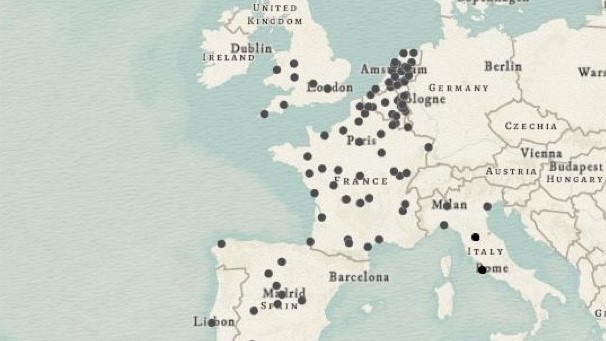Can agricultural investment help countries develop their economies? Recent BSc Economics and Economic History graduate Constantin Arminjon examines Franco’s ambitious plan to reform Badajoz, Spain’s most underdeveloped province. He finds that, while investment increased agricultural productivity, it did little to industrialise the region and bring forward sustained economic growth.
Francisco Franco ruled Spain from 1939 to 1975. During its early years, Franco’s regime took a policy stance in favour of strong interventionism in the economy. Particularly ambitious was its intervention in the region of Badajoz, in south-west Spain. The plan for Badajoz (Plan Badajoz) aimed to create an extensive network of dams and canals that would irrigate 115,000 hectares of land. In creating new agricultural land, Franco’s government hoped to revitalize a region plagued by urban flight, seasonal unemployment, and pauperism. The plan estimated that three hundred new villages would settle around the eventual fertile lands.
From its onset in 1952, the plan was subject to widespread scepticism. International creditors worried that the cash-strapped Spanish government could not afford to spend what would amount to 2.1 billion dollars in today’s currency on agricultural renewal.
Yet, following these decades of dissent, no quantitative assessment has been conducted to determine the magnitude of the effect of the project. A clear statistical analysis of the plan’s effects was never conducted to back any statement, which relied largely on circumstantial evidence, a serious oversight considering the wide availability of municipal data collected between the 1950s and 1970s.
My research reveals that while agricultural productivity increased, industrial concentration and incomes stagnated in the parts of the province that were directly next to the dams and canals. Rural populations across Spain declined between 1950 and 1980, as the nation staggered disjointedly toward an industrialized economy. However, the rural population around municipalities affected by the plan experienced greater rural-urban emigration than municipalities not affected by the plan. Plan-Badajoz municipalities that received economic had on average 1,159 more inhabitants by 1980 than non-Plan-Badajoz municipalities. Similarly, the average size of parcels was significantly larger in the areas affected by the intervention. Yet, the average number of industries didn’t increase in the Plan-Badajoz municipalities.
Why didn’t the Plan Badajoz manage to stimulate local industry?
Firstly, from an industrial policy point of view, the Francoist government made crucial mistakes. It explicitly left the industrialization and electrification of the region to private initiative, only taking charge of the planification and execution of infrastructure specifically relating to agricultural development. The Francoist government thought that the infrastructure it provided in one sector would stimulate private initiative in another.
But this view overlooks the fact that local private savings were still too small to afford the high upfront costs of modern infrastructure. Although the population enjoyed better living standards in the 1970s than they did in the 1950s, it would be an overstatement to claim that they had enough savings to start businesses. As such, what the Francoist government called a “lack of private initiative” or what I would more neutrally call a “lack of private capital” restrained the local entrepreneurial spirit.
Furthermore, the Badajoz province had to compete against pre-existing industrial centres and provinces along the Mediterranean coast for private investments. Domestic and foreign investors chose the safer bets. In short, the Spanish economy following the 1960s economic reforms which put an end to isolation and adopted more free-market stances, tended to concentrate. Badajoz’s timing would have always made economic growth difficult.
Moreover, research on the ability of agriculture plans to generate long term economic growth seems to indicate that while increased agricultural productivity does help growth on the short-term, in industrializing and industrialized country, it fails to generate growth in other sectors through spillover. This is often due to migratory trends, since, as agriculture gets more intensive, less labour is needed. This is what we see in the province of Badajoz. With high demographic pressure and relatively low barriers to migration, it appears that the plan Badajoz only stimulated the province’s rapid rural exodus and increased urbanization, without however kickstarting the expected industrial process.
Conclusion
On the one hand, it must be said that the plan had a beneficial effect on the local economy to the extent that it reduced chronic unemployment and poverty in the region. Furthermore, an analysis of population trends suggests that the municipalities left outside of the plan suffered a much stronger rural exodus. As mentioned before the agrarian part of the plan was a relative success. But, in terms of creating spillover effects into other economic sectors, the plan failed.
The experience of Badajoz in Spain bears some interesting lessons on the role of infrastructure investment in rural regions. As struggle for irrigation and water management become more pressing issues across the globe, the limitations, and successes of these projects, become more relevant for states planning and fighting against desertification.




